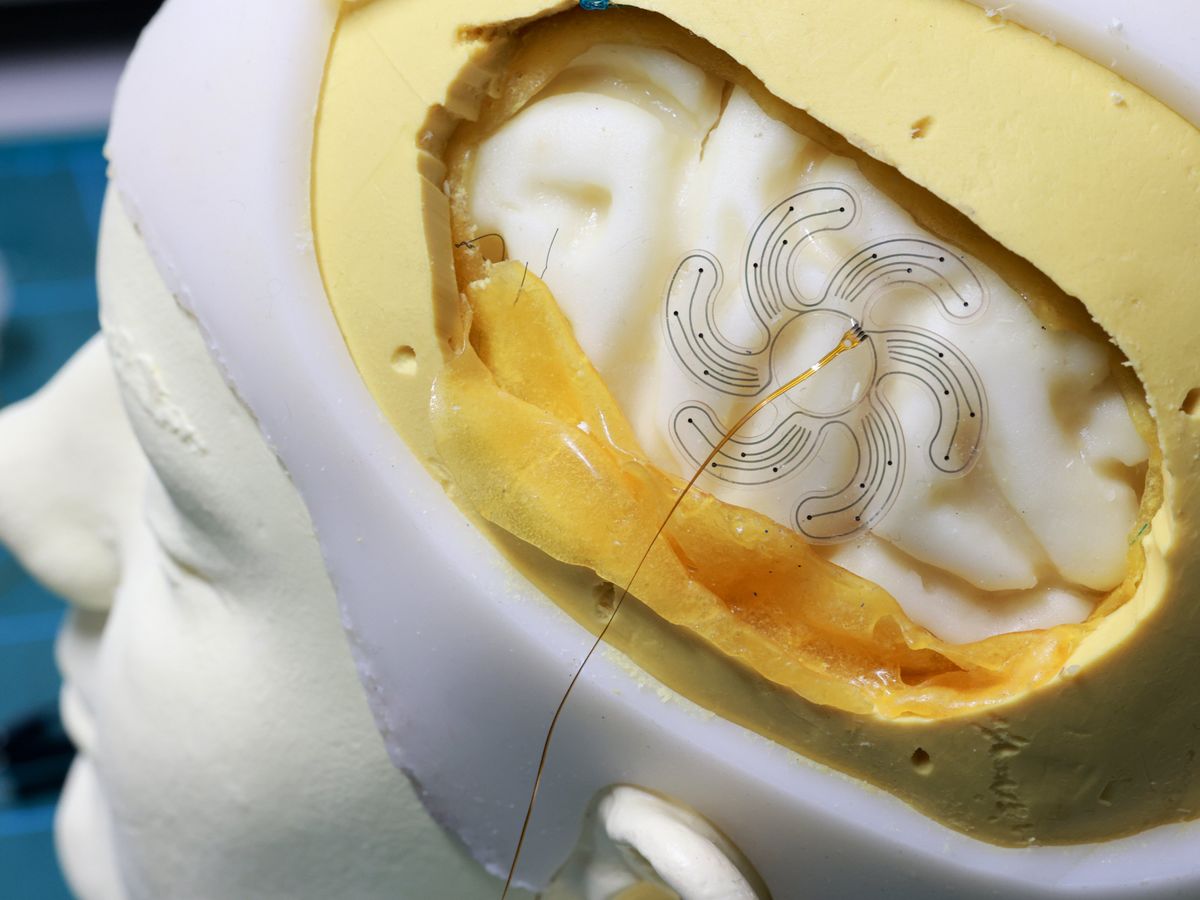An octopus-like soft robot can unfurl itself inside the skull on top of the brain, a new study finds. The novel gadget may lead to minimally invasive ways to investigate the brain and implant brain-computer interfaces, researchers say.
In order to analyze the brain after traumatic injuries, help treat disorders such as seizures, and embed brain-computer interfaces, scientists at times lay grids of electrodes onto the surface of the brain. These electrocorticography grids can capture higher-quality recordings of brain signals than electroencephalography data gathered by electrodes on the scalp, and they are also less invasive than probes stuck into the brain.
However, placing electrocorticography grids onto the brain typically involves creating openings in the skull at least as large as these arrays, leaving holes up to 100 square centimeters. These surgical operations may result in severe complications, such as inflammation and scarring.
Now scientists have developed a new soft robot they can place into the skull through a tiny hole. In experiments on a mini pig, they showed the device could unfold like a ship in a bottle to deploy an electrocorticography grid 4 centimeters wide, all of it fitting into a space roughly only 1 millimeter wide. This “enabled the implant to navigate through the narrow gap between the skull and the brain,” says study senior author Stéphanie Lacour, a neural engineer and director of the Federal Polytechnic School of Lausanne’s Neuro-X Institute, in Switzerland.
Deployable electrodes for minimally invasive craniosurgerywww.youtube.com
The researchers created the array by evaporating flexible gold electrodes less than 400 micrometers thick onto soft, flexible, medical-grade silicon rubber. The array had six spiral arms that maximized its surface area and thus the number of electrodes in contact with the brain.
The scientists folded the array inside a cylindrical tube that was then inserted through a hole in the skull. They deployed the array by inserting a watery solution that made each spiral arm “evert,” or turn inside out, over the course of 30 to 40 seconds.
When the researchers electrically stimulated the mini pig’s snout, the array successfully captured brain activity related to the sensations. In the future, Lacour and her colleagues want to create arrays that can detect brain waves and also stimulate the brain, she notes.
Sensors in the array monitored the fluid pressure that each arm encountered in real time. These sensors helped make sure the arms didn’t push with too much force as they deployed.
“We have not encountered issues with resistance during deployment, but this is certainly a point to explore further with this technology,” Lacour says. “The inflation of the leg during deployment should be kept minimal so as not to compress the brain and trigger irreversible damage.”
The scientists had explored the idea of rolling up each arm of the array. However, the longer the arm, the thicker it became when rolled up. If a rolled-up arm becomes too thick, it will take up too much room to easily deploy. In contrast, the eversion technique used in the new study has no such limit on size. In theory, eversion could help deploy a grid that could cover the entire surface of the brain, the researchers say.
A spin-off of the Federal Polytechnic School of Lausanne called Neurosoft Bioelectronics now aims to bring this invention to the clinic. The spin-off was recently granted 2.5 million Swiss francs (nearly US $2.8 million) by the Swiss innovation agency Innosuisse.
“The deployable implant in our current study is a proof of concept,” Lacour says. “Before it may be used in a clinical context, much work is needed to translate and scale the technology to medical-grade requirements. But the research holds exciting applications in brain-computer interfaces and monitoring implants for epilepsy.”
The scientists detailed their findings online 10 May in the journal Science Robotics.
- Soft Circuits to Control Soft Robots ›
- Robot Octopus Points the Way to Soft Robotics With Eight Wiggly ... ›
Charles Q. Choi is a science reporter who contributes regularly to IEEE Spectrum. He has written for Scientific American, The New York Times, Wired, and Science, among others.



